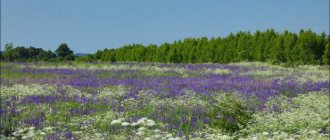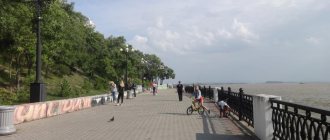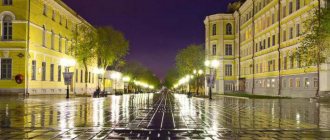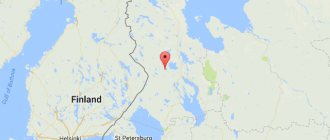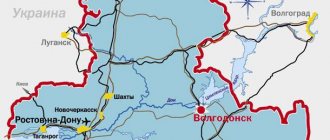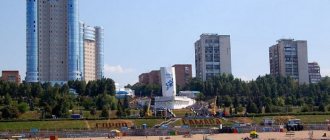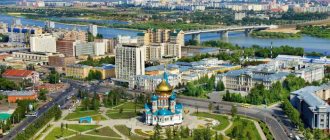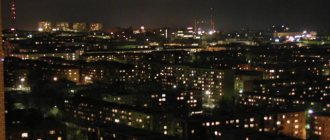Currently, there are approximately one thousand one hundred cities in our country. They are scattered across all expanses of our vast country, but are still more concentrated in central Russia. Sociologists attribute this to the fact that cities located in economically prosperous areas, which include the central regions, are the most attractive for living. We decided to tell you about two cities with similar names, but completely different histories and populations. Have you already guessed what we'll be talking about? Of course, our article is dedicated to Rostov and Rostov-on-Don - these two magnificent cities, which are real jewels in the scattering of Russian cities.
Rostov: general characteristics
Rostov is one of the most ancient cities in our country; it has a very difficult past and an equally interesting present. It is not without reason that it is considered one of the most beautiful and vibrant cities in central Russia.
The first mentions of the city in chronicles date back to the ninth century, but historians believe that in fact this date is not reliable and Rostov existed long before this date. After all, its first inhabitants were not Slavs at all.
At the moment, the population of Rostov is growing steadily. Every year the city becomes more attractive and comfortable for living. According to analysts, the quality of life enjoyed by the population of Rostov is 15% higher than the average level in Russia.
Assumption Cathedral
The Assumption Cathedral is located on Cathedral Square of the Rostov Kremlin. This building was built long before the construction of the Kremlin itself. The cathedral was built in 991 and was founded in honor of the baptism of the townspeople. It was the main church of the diocese, so the tombs of princes and bishops have been preserved here. For political reasons, the Assumption Cathedral has been closed since 1935. Its activities resumed in 1991. Now the cathedral belongs to the Russian Orthodox Church.
Location and description of Rostov
Rostov is only fifty kilometers from Yaroslavl and is located on the shores of Lake Nero. This is the largest freshwater lake in the region. Archaeologists and historians claim that it was inhabited by people already six thousand years ago and the Slavs came here to fully formed settlements and settlements. Later, the lake was often called Rostov, in honor of the city itself.
The ancient history of Rostov is reflected in a large number of historical monuments. They allowed the city to be included in the country's cultural heritage list. The population of Rostov is very proud of the fact that their hometown is an obligatory stop on the route of travel along the so-called Golden Ring of Russia.
Today in Rostov there are more than one hundred and fifty monuments of federal significance. In addition to them, the population of Rostov can tell you about two hundred more places, imbued with history and related to the cultural monuments of the city. It’s worth visiting Rostov even for its extraordinary beauty, combining ancient mansions with modern buildings. Moreover, all the innovations do not spoil the appearance of the city at all; they fit well into the existing plan and complement the ancient facades of houses and churches.
Rostov the Great has a lot of medieval attractions, it is much older than Vladimir and Moscow, and is considered the same age as Murom and Suzdal.
2. Now Rostov the Great belongs to the Rostov district of the Yaroslavl region.
3. Many people often confuse Rostov the Great with Rostov-on-Don. But these are different cities. Rostov-on-Don is a modern metropolis. Rostov the Great is a small, cozy, original town located not far from Moscow.
4. A reasonable question arises: why is he Great if he is small? But because in the 9th century Rostov was annexed to the state of Rurik. Since the middle of the 11th century, the city has been part of the Rostov-Suzdal Principality. In 1207, the independent Principality of Rostov was formed.
5. During this period, Rostov became one of the large and developed cities in the north-west of Russian lands due to cultural and economic growth. There is a version that this is why the city received an addition to its name and became Rostov the Great.
6. The very first mention of this city was recorded in 862 in the chronicle. However, based on archaeological excavations, a version was compiled about the first fortification on the shores of Lake Nero. It was called the Sarskoye settlement, which appeared already in the 7th century.
7. Rostov itself was formed no earlier than the 10th century. This difficulty in determining the time intervals for the formation of the city is due to the fact that there are several hypotheses. Some historians say that the city already existed in these places before the Slavs appeared. Others believe that it was included in the Sarsky settlement only in the 10th century. It is noteworthy that for some time both of these settlements existed in parallel and peacefully.
8. There is also no exact information why the city is called Rostov. There is a version that its founder was the leader of the Finnish-Ugric tribe Merya Rosta, after whom the city was named. Some associate the name with a shortened version of the Slavic name Rostislav - Rost. When adding the suffix “-ov”, a word is obtained indicating ownership of the founder.
9. Another version is also connected with the name. It is believed that a certain Prince Ross created a city on this site. Later it began to be called “Rossov Stan” - the settlement of Ross, which gradually transformed into Rostov.
10. In Rostov the Great there are more than one hundred cultural and architectural monuments.
11. Officially, Rostov the Great is simply called Rostov. But the word “Great” has long been firmly entrenched in its name. This is exactly how the city was named in the Ipatiev Chronicle, dated 1151.
12.It was founded in 862, which makes it one of the most ancient cities in Russia.
13. Rostov the Great is called the birthplace of original Russian architecture.
14. The “Golden Ring” of Russia includes 8 cities, including Rostov the Great. It is located 50 kilometers from the city of Yaroslavl and is one of the most visited tourist cities.
LAKE NERO
15. The beautiful Lake Nero, on the shores of which Rostov the Great stands, is truly ancient, it was formed before the Ice Age, it is already about 0.5 million years old. Most lakes on Earth last about 10 times less, after which they turn into swamps.
16. Lake Nero is the oldest body of water located in Russia. There are various islands on the lake, both small and large. About eight streams flow into the pit.
17. There is a legend that at the bottom of Lake Nero lie treasures hidden by the Mongol-Tatars. Many are still looking for them, but even studying the lake bottom using special equipment has not brought any results. Most likely, this is really just a legend.
18. Archaeologists claim that there is nothing at the bottom of the lake except for the healing lake silt of sapropel. Some say that if the extraction of this healing silt is developed, Rostov could become a real resort city.
19.However, swimming in the lake is prohibited, since the bottom is too muddy and the water has recently been polluted by city runoff. But despite this, a picturesque view opens onto the shores of the lake. Rostov residents are very proud of their lake.
CITY PARK ON THE SHORE OF LAKE NERO
20.The City Park is located on its coast. Citizens often relax here. Reconstruction work has recently been carried out here. Benches were installed, beautiful paving slabs were laid, and flower beds were laid out. The surroundings are clean and tidy. Various celebrations and performances are often held here.
21.The Metropolitan Garden is located nearby. It is especially cozy and comfortable. There are also beautiful apple trees here. If you wish, you can treat yourself to a fragrant apple.
22. For 400 years to this day, the central part of Rostov the Great has been called a city.
KREMLIN IN ROSTOV VELIKY
23. The main attraction and symbol of the city is the Rostov Kremlin. Unique from an architectural point of view, the Rostov Kremlin looks very unusual. Strictly speaking, this is not quite a Kremlin, that is, a fortress - it was built as a residence for Bishop Jonah Sysoevich, Metropolitan of the Rostov diocese.
24. The Kremlin was built at the end of the 17th century. It stands on the shore of Lake Nero. The temple complex includes church, utility and administrative buildings. The absolutely stunning metropolitan chambers, churches, and high-rise buildings attract many admiring glances. And, of course, the real pearl here is the Assumption Cathedral. It is equipped with a three-span belfry and framed by spectacular bells.
25. On the territory of the Kremlin there are Cathedral Square, the Bishop's Courtyard and the Metropolitan Garden. The Rostov Kremlin was built to demonstrate the power and strength of spiritual authority.
26. The Kremlin, starting from the 20th century, has become a place of attraction for everyone's attention. A wide variety of historical films were filmed here. The most popular filming “Ivan Vasilyevich changes his profession” by Gaidai. Everyone knows this film firsthand. The place was ideal as a filming location.
27. A unique belfry has been preserved in the Rostov Kremlin, all the bells of which were cast by craftsmen back in the 18th century. They even have their own names. And the mass of the largest of the Rostov bells reaches an impressive 33 tons. The Rostov Kremlin is a candidate site for inclusion in the UNESCO World Heritage List.
28. Before the revolution, there were no street names or house numbers in the center of Rostov. The owner's name was simply indicated as an address on the letters.
29. Here you can take a walk through the famous shopping arcades. They appeared here in the mid-19th century, and today they embody the center of commercial life.
30. Industrialist Alexey Kekin had a significant influence on the development of Rostov the Great. He was a generous and noble soul. A native of this city, he lived all his life in St. Petersburg, where he achieved incredible wealth. Kekin built the Rostov Linen Manufactory to provide people with work.
31.In addition, the merchant became famous for his charitable activities. His donations helped in the restoration of the Rostov Kremlin. Thanks to them, the Museum of Church Antiquities was opened and a men's gymnasium was built. Kekin also built the first water supply system in the city for all residents. They also wanted to open a university, but there was a revolution in the country, and the project did not come true.
32. During his life, Alexey Kekin generously engaged in charity work in his hometown, and after his death he bequeathed as much as 2 million rubles to him, which by pre-revolutionary standards is a fabulous sum.
33.In the mansion of A. Kekin there is a museum of merchants. The exhibition center presents the life of the 18th-19th centuries. An experienced guide will tell you in detail about various historical facts. Some of them seem mysterious. Here you can get acquainted with the clothing, furnishings, paintings, and literature of past years.
34.Here you can visit the exclusive old Rotlf manufactory. Its exposition is no less rich. It also belonged to the merchant Kekin. It is interesting that, despite all the unprofitability of the building, the owner did not seek to close it, but always paid due attention to it.
GYMNASIUM IM. A. L. KEKINA
35. There is also a famous gymnasium named after. A. L. Kekina. The educational institution is famous for its truly unique history. It is unlikely that you will find a similar analogue anywhere. The gymnasium consists of two buildings. The establishment was built at the expense of the merchant A. Kekin. The building is made in a restrained classical style, beautifully decorated with stucco and columns.
36. Unlike many other ancient cities, which live mainly on tourism, various industries are well developed here.
37.The city’s coat of arms depicts a silver deer. It is decorated with golden horns, mane and hooves. The coat of arms was established by Empress Catherine the Great in 1778.
38. Rostov the Great became famous for its trades and crafts. The most famous are enamel and black-polished ceramics. Enamel is an artistic painting on enamel.
39.Black-polished ceramics are products made from high-quality black and brown ceramic clay, which is mined in the vicinity of the city. All items made in these styles of applied art look unique and enchanting. And of course locals use them as souvenirs for tourists.
40. Alyosha Popovich, a hero and hero of folk tales, most likely lived in Rostov the Great. Many researchers associate the name of the legendary hero with the name of the Rostov boyar Alexander Popovich, who lived here in the 13th century and was known as a strongman and invincible warrior.
ASSUMPTION CATHEDRAL IN ROSTOV VELIKY
41. The Assumption Cathedral is located on the Cathedral Square of the Rostov Kremlin. This building was built long before the construction of the Kremlin itself. The cathedral was built in 991 and was founded in honor of the baptism of the townspeople. It was the main church of the diocese, so the tombs of princes and bishops have been preserved here. For political reasons, the Assumption Cathedral has been closed since 1935. Its activities resumed in 1991. Now the cathedral belongs to the Russian Orthodox Church.
42. Next to the Assumption Cathedral there is a belfry. Despite the fact that it was built later than the cathedral, its architecture is in the same style. It was built at the end of the 13th century. And then the bells were cast. 15 bells have survived to this day. The largest of them is “Sysoy”. It weighs almost 33 tons. It is followed by the Polyeleos bell, which weighs about 15 tons. The third largest is the Swan bell. Its weight is 8 tons. Each giant is controlled by 3-4 bell ringers. Twice a day you can hear the raspberry ringing over the Rostov Kremlin.
43. The population of the city at the beginning of 2022 was about 40,000 people. The population of Rostov the Great is slowly but declining almost every year.
44. In the village of Varnitsa, not far from Rostov the Great, there is the Trinity-Sergius Varnitsky Monastery. This village is famous for the fact that it was here that Abbot Sergius of Radonezh was born, and deeply religious people constantly come to the monastery.
45. Due to the fact that the historical architectural ensemble of Rostov is well preserved, as well as the Russian traditional color and picturesque nature, historical films are often shot here. Rostov the Great was very fond of directors of Soviet cinema. Gaidai, Ryazanov, Danelia and Bondarchuk (senior) filmed their films here. Of course, the most famous of them is “Ivan Vasilyevich is changing his profession.” There are even tours based on this film.
CHURCH OF NICHOLAS ON SUDOZERIE
46. In Rostov the Great, a church with a complex history deserves attention - St. Nicholas on Podozerie. It was built after the decree of Emperor Peter Alekseevich on the need to erect any stone structures that cross the borders of St. Petersburg. This place is unique.
47.The structure is more like a fortress. The walls are large in height and width. The towers have loopholes and the masonry is massive. One gets the impression of the inaccessibility of the structure that protected the local monks. The Lord's servants had the status of warriors, reliably protecting the object from attacks by ill-wishers.
48. In 2015, Rostov the Great received first place in the “Cultural Capital of Small Towns of Russia” competition, beating two hundred competing cities.
49. Tourists come here from all over the world. It is equally cozy here at any time of the year.
50. Rostov the Great is distinguished by the presence of a large number of objects reflecting the entire history of ancient architecture, traditions and customs of Russia. It is not for nothing that Rostov the Great is visited by a huge number of tourists every year. By the way, the number of city guests far exceeds the number of its residents.
photo from public domain
Rostov the Great: brief historical background
Analysts' data suggest that Rostov is basically a mono-ethnic city. But few people know that this tradition did not always exist. We have already said that on the shores of the lake lived the Merya tribes, who reacted very favorably to the arrival of the Eastern Slavs on their lands. Moreover, many archaeologists claim that Rostov was literally a city divided into two parts. The Slavs settled in one, and the other was given to the indigenous peoples. Moreover, the city residents lived very peacefully, despite religious differences. The Slavs, who were Christians, built churches in their part of Rostov and did not impose their beliefs on the pagan tribes.
Over time, many other tribes began to flock to Rostov for permanent residence. The population has become even more diverse, but never in the entire history of the city has there been interethnic strife. This helped to form a single component of the city - Rostovites who know how to unite and coexist peacefully on the same territory.
Ancient crafts and souvenirs
Rostov the Great became famous for its trades and crafts. The most famous are enamel and black-polished ceramics . Enamel is an artistic painting on enamel. Black-polished ceramics are products made from high-quality black and brown ceramic clay, which is mined in the vicinity of the city. All items made in these styles of applied art look unique and enchanting. And of course locals use them as souvenirs for tourists.
Population
Rostov presents a rather amazing picture for residents of large cities. After all, even the population growth over the past five years has not brought the city to a new level. According to sociologists, at the end of 2016, 30,943 people lived in Rostov. This figure is stable, and fluctuations in numbers are mainly caused by an increase in the birth rate and a decrease in mortality in the city.
In addition, the average life expectancy in Rostov is 75 years, which is much higher than the national average. This fact is associated with a good environmental situation and the absence of large industrial enterprises in the city.
The mystery of the name
There is no exact information why the city is called Rostov. There is a version that its founder was the leader of the Finnish-Ugric tribe Merya Rosta , after whom the city was named. Some associate the name with a shortened version of the Slavic name Rostislav - Rost. When adding the suffix “-ov”, a word is obtained indicating ownership of the founder. Another version is also associated with the name. It is believed that a certain Prince Ross created a city on this site. Later it began to be called “Rossov Stan” - the settlement of Ross, which gradually transformed into Rostov.
Population density and ethnic composition
At the moment, the residents of Rostov are represented mainly by Russians. They make up more than 95% of the city's population. The remaining 5% was almost evenly distributed among the nations that came here from other regions of Russia. They do not constitute a static value, so they are rarely taken into account in official data.
The population density is 1,970 people per square kilometer, which is quite average in the country among cities with a population of less than one hundred thousand people.
Current data
According to published data from Rosstat in 2022, the population of the city is 1,137,904 units, the Rostov agglomeration is 2.7 million (the fifth agglomeration in the country). It is included in the list of the largest settlements in the Russian Federation in terms of the number of permanent inhabitants, taking 9th place.
An important parameter is density. The parameter displays the number of inhabitants/1 km2. The value for 2022 is 3265.15 inhabitants/km2. The area of the city is 348.5 square meters. km.
“The Southern Capital of Russia”: general characteristics
In the south of our country, Rostov-on-Don is one of the largest and most beautiful cities. Now it is rightfully considered a million-plus city. And his official history dates back to the mid-eighteenth century, and throughout his existence he has repeatedly appeared in a heroic light.
Now the city is the cultural, historical and administrative center of the southern region. It is simply impossible to come to Rostov-on-Don and remain indifferent to it. The city captivates you literally at first sight. Moreover, every year it becomes more and more beautiful and comfortable. Six years ago, Rostov was placed in fifth place in the ranking of cities with a high quality urban environment. The population of this wonderful metropolis is proud not only of the heroic past of their city, but also of its present, filled with brilliant prospects.
For example, next year this city will host the World Cup. This means that in the near future Rostov-on-Don will become even more beautiful and will receive a powerful impetus for further development.
Raspberry ringing
Next to the Assumption Cathedral there is a belfry . Despite the fact that it was built later than the cathedral, its architecture is in the same style. It was built at the end of the 13th century. And then the bells were cast. 15 bells have survived to this day. The largest of them is “Sysoy” . It weighs almost 33 tons . It is followed by the Polyeleos , which weighs about 15 tons . The third largest is the Swan . Its weight is 8 tons. Each giant is controlled by 3-4 bell ringers. Twice a day you can hear the raspberry ringing over the Rostov Kremlin.
History of the city
On the territory of modern Rostov, archaeologists have found the remains of settlements of ancient people dating back to three thousand years BC. But the official history of the settlement dates back to the time of Peter I. The Russian autocrat, during the Azov campaigns of the seventeenth century, appreciated the strategic importance of these territories. He wanted to build a fortress here to protect Russian lands from attacks by the Turks and Tatars, but for certain foreign policy reasons he was unable to do this.
Therefore, Rostovites consider the founding date of the city to be December 1749. At this time, Empress Elizabeth issued a decree on the creation of the Temernitsa customs house, which, by the will of fate, was built on the site of today's metropolis.
Rostov-on-Don: population
As we have already clarified, for many years it has been classified as a million-plus city. To be more specific, we can say that already in the eighties of the last century Rostov-on-Don crossed the line of one million inhabitants and officially joined the ranks of special megacities.
At the moment, the population of Rostov-on-Don is 1,125,103 people. An impressive figure, isn't it? According to the indicator, the city ranks tenth in the country, behind the recognized leaders Moscow and St. Petersburg, as well as several other cities. Sociologists believe that if population growth does not stop, then in fifteen years Rostov will be in the top five cities on this list. In Europe, this Russian city ranks thirtieth in terms of population.
It is worth clarifying that the figure characterizing the population of Rostov-on-Don is more than 20% of all residents of the region. We can say that every fifth person in the region lives in this metropolis. Many analysts attribute this to the abundance of jobs, because quite often people move here from villages and nearby small towns in search of a better life. Be that as it may, the city fully justifies its title of “the southern capital of Russia.”
How to get there
The journey from the capital by private car or excursion bus takes just over 3 hours. A fast train from Moscow to Yaroslavl (departure at 7.35) will cover the distance in 2.5 hours. The Arkhangelsk squad (10.05) will spend ~3'40.
A ticket with meals in a seated carriage costs ~1,500 RUB. It is, of course, better to buy in advance: on the eve of May Day and other holidays, not to mention the New Year holidays, nothing will be in stock.
It’s even more convenient to travel by car! And not because you can get from the capital in just 3-4 hours (215 km). But because, theoretically, you can independently design an interesting excursion route. Including a visit to Pereslavl-Zalessky, an overnight stay in Rostov and a stopover - for a day or two - in Yaroslavl. The distance between the designated cities is literally ridiculous - from 65 to 55 km!
What you can see in Yaroslavl
